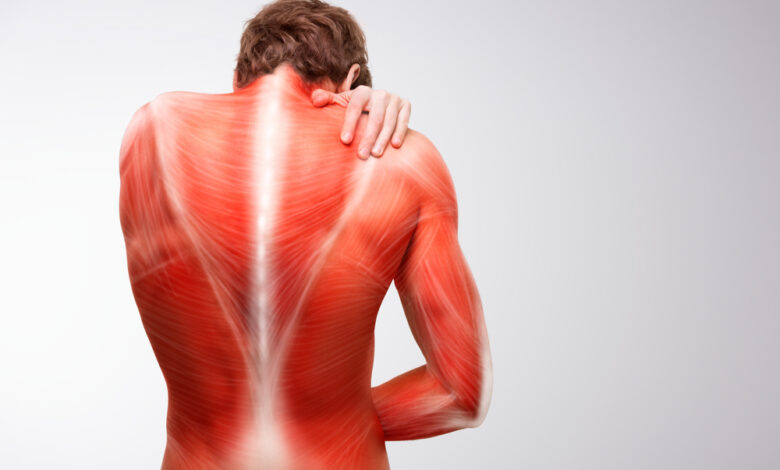
Pain, whether acute or chronic, can significantly impact your quality of life, making even simple tasks feel overwhelming.
Topcynta 100mg provides pain relief by affecting the central nervous system (CNS). It binds to opioid receptors in the brain and spinal cord, which decreases the perception of pain.
Whether it’s a sudden headache, muscle strain, joint pain, or chronic discomfort, most people want to find a way to relieve pain quickly.
If you’ve taken a monoamine oxidase inhibitor in the last 14 days, you should avoid using Asmanol 100mg due to dangerous interactions.
In this blog, we will explore various fast-acting pain relief strategies, ranging from medications and home remedies to lifestyle changes. Each of these methods can help alleviate pain, depending on the cause and severity.
Table of Contents
ToggleUnderstanding Different Types of Pain
To get rid of pain quickly, it’s essential to understand what type of pain you’re dealing with. There are generally two categories of pain:
- Acute Pain: This is sudden, sharp pain often resulting from an injury, surgery, or a specific event (such as a muscle strain). Acute pain is usually temporary and resolves once the underlying issue is treated.
- Chronic Pain: This pain lasts for more than three months and can result from conditions like arthritis, back problems, or nerve damage. Chronic pain may be persistent and requires long-term management.
Different types of pain require different approaches for fast relief. Let’s explore some of the most effective strategies.
1. Over-the-Counter Medications
One of the fastest ways to alleviate pain is by using over-the-counter (OTC) pain medications. These are widely available, effective, and suitable for most cases of mild to moderate pain.
- Ibuprofen (Advil, Motrin): Ibuprofen is a nonsteroidal anti-inflammatory drug (NSAID) that helps reduce inflammation and pain. It’s effective for conditions like muscle strains, headaches, menstrual cramps, and arthritis.
- Acetaminophen (Tylenol): Acetaminophen is another popular pain reliever, although it does not reduce inflammation. It’s best for treating headaches, toothaches, and minor injuries.
- Aspirin: Aspirin works similarly to ibuprofen by reducing inflammation and pain. It’s commonly used for headaches, fever, and minor muscle pains.
Quick Tips for Using OTC Medications:
- Follow the dosage instructions carefully.
- If you have any pre-existing conditions, consult with a doctor before using these medications.
- Avoid using multiple pain relievers simultaneously to prevent overdose.
2. Apply Heat or Cold Therapy
Both heat and cold therapy are effective for different types of pain, and applying them can provide immediate relief.
- Cold Therapy (Cryotherapy): Cold compresses, ice packs, or even a bag of frozen peas can help numb acute pain, reduce inflammation, and decrease swelling. Cold therapy is ideal for injuries like sprains, strains, or post-surgical pain. Apply an ice pack wrapped in a towel to the affected area for 10-15 minutes.
- Heat Therapy: Heat helps increase blood flow, relax muscles, and soothe chronic pain. A heating pad, warm bath, or heat wrap can alleviate pain caused by muscle spasms, joint pain, or menstrual cramps. For heat therapy, apply heat to the painful area for 15-20 minutes.
When to Use Cold vs. Heat:
- Use cold therapy for acute injuries, swelling, and inflammation.
- Use heat therapy for muscle pain, stiffness, and chronic conditions.
3. Rest and Elevate
Resting the affected area can help reduce pain and prevent further injury. For injuries like sprains, strains, or joint pain, elevate the injured area to reduce swelling and promote faster healing.
For example, if you’ve twisted your ankle, elevating it above your heart level will allow fluids to drain, reducing swelling and pain. Combine rest with cold or heat therapy for better results.
4. Massage and Stretching
Massage therapy and gentle stretching can relieve muscle pain, tension, and stress-related discomfort. Massaging the painful area can stimulate blood flow and relax tight muscles, reducing pain quickly. This is particularly useful for lower back pain, neck stiffness, and shoulder pain.
- Self-Massage: Use your hands or a massage tool to apply pressure to the sore area in circular motions. You can also use a foam roller to massage larger muscle groups like the back or thighs.
- Stretching: Stretching muscles that are tight or in pain can help release tension and improve flexibility. For example, if you have a stiff neck or back pain, try gentle yoga stretches, such as child’s pose or cat-cow pose, to relieve tension.
5. Topical Pain Relievers
Topical creams, gels, and patches can provide localized pain relief when applied directly to the skin. These products often contain ingredients like menthol, capsaicin, or salicylates, which help to numb the area or reduce pain sensations.
- Menthol-based creams: These create a cooling sensation and are particularly effective for muscle pain, backaches, or joint discomfort.
- Capsaicin cream: Made from chili peppers, capsaicin desensitizes pain receptors and is useful for conditions like arthritis or neuropathic pain.
- Lidocaine patches or gels: Lidocaine is a local anesthetic that numbs the skin, providing immediate pain relief for localized injuries or muscle pain.
Quick Tip: Always wash your hands after applying topical pain relievers, especially if they contain menthol or capsaicin, as these can cause irritation if they come into contact with your eyes or mouth.
6. Hydration and Nutrition
Dehydration can exacerbate certain types of pain, such as headaches and muscle cramps. Drinking enough water throughout the day is essential to prevent these issues and promote healing.
- Water: Staying hydrated is particularly important if you’re experiencing headaches or muscle pain, as dehydration can worsen these symptoms. Aim to drink 8 glasses of water a day, or more if you’re physically active.
- Anti-Inflammatory Foods: Eating a diet rich in anti-inflammatory foods can help reduce chronic pain over time. Foods like leafy greens, berries, fatty fish (like salmon), nuts, and seeds can help reduce inflammation, which is a common cause of chronic pain.
7. Breathing Exercises and Meditation
Mind-body techniques such as deep breathing exercises, progressive muscle relaxation, and meditation can help reduce pain, especially if stress or anxiety is contributing to your discomfort.
- Deep Breathing: Focus on slow, deep breaths, inhaling through your nose and exhaling through your mouth. This simple technique helps calm the nervous system and may reduce pain perception, especially in stress-related conditions like tension headaches or chronic pain.
- Mindfulness Meditation: Mindfulness teaches you to focus on the present moment without judgment. When dealing with pain, mindfulness meditation can help shift attention away from the pain and reduce emotional distress, improving your ability to cope.
8. Exercise
Though it might seem counterintuitive, light physical activity can actually help reduce certain types of pain, particularly in people with chronic conditions like arthritis or lower back pain. Exercise improves blood flow, releases endorphins (the body’s natural painkillers), and strengthens muscles, all of which can reduce pain.
- Low-Impact Exercise: Activities such as walking, swimming, or cycling can help alleviate joint and muscle pain without causing additional strain.
- Stretching and Yoga: Gentle stretching and yoga can improve flexibility, release tension, and reduce stiffness in muscles and joints.
9. Prescription Medications
For more severe pain that doesn’t respond to OTC medications or natural remedies, you may need to consult a doctor for prescription medications. These could include:
- Stronger NSAIDs: Medications like celecoxib (Celebrex) or prescription-strength ibuprofen can help reduce inflammation and provide stronger pain relief.
- Opioids: In cases of severe pain, such as post-surgery or injury, opioids like oxycodone or hydrocodone may be prescribed. However, opioids come with a risk of addiction and should only be used under strict medical supervision.
- Muscle Relaxants: For muscle spasms or tension, muscle relaxants like cyclobenzaprine may be prescribed.
Conclusion
Getting rid of pain quickly requires a multifaceted approach that addresses the cause of the pain and provides relief through medications, therapies, and lifestyle changes. Whether you’re dealing with acute or chronic pain, there are numerous fast-acting options available, from OTC medications to natural remedies like cold therapy and massage.
Always consult with a healthcare provider if you experience persistent or severe pain, as it may be a sign of an underlying condition that requires professional treatment.





